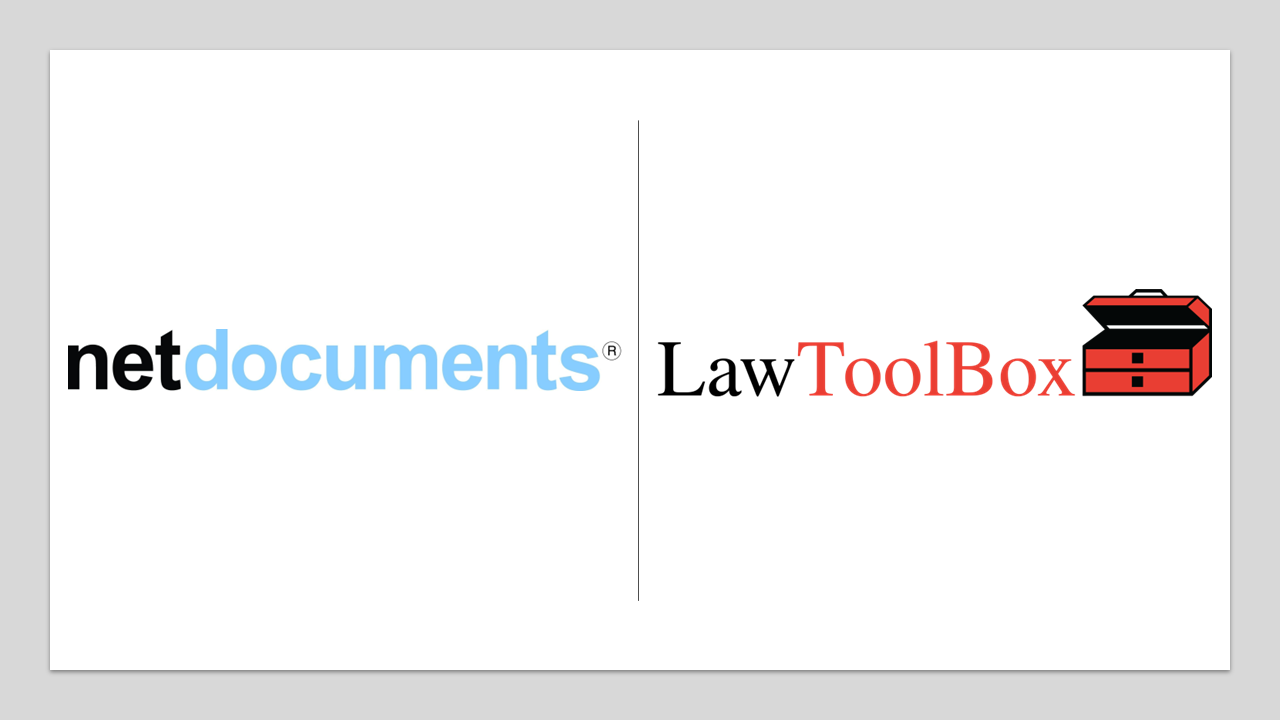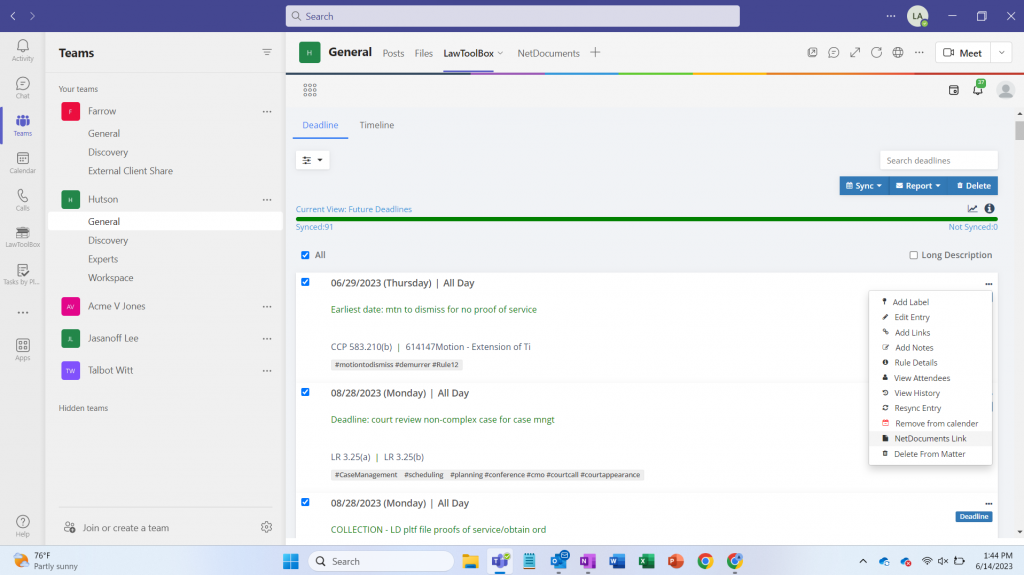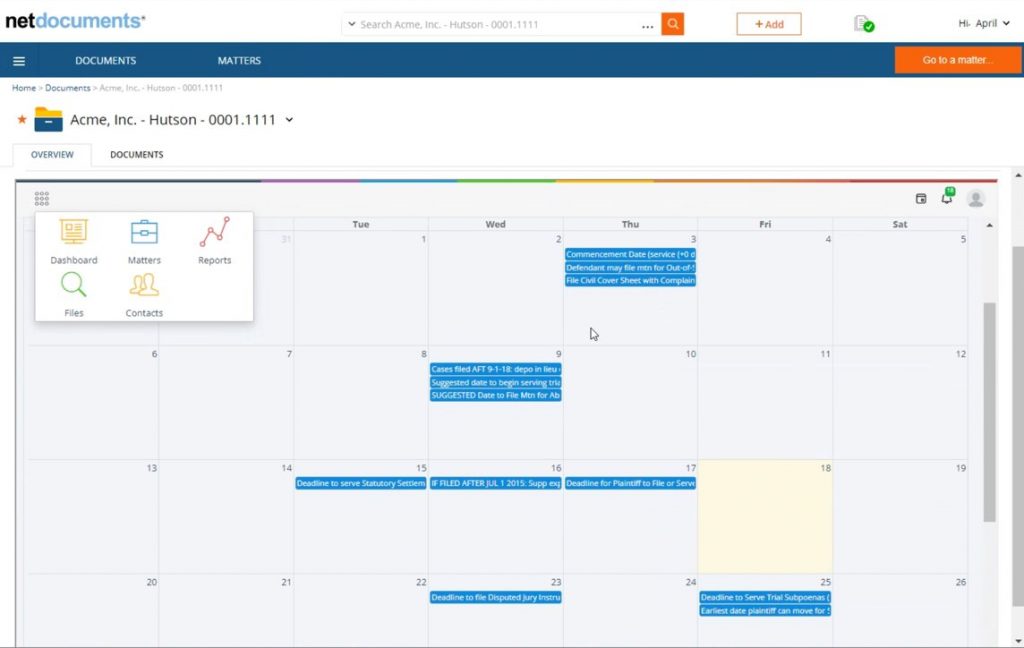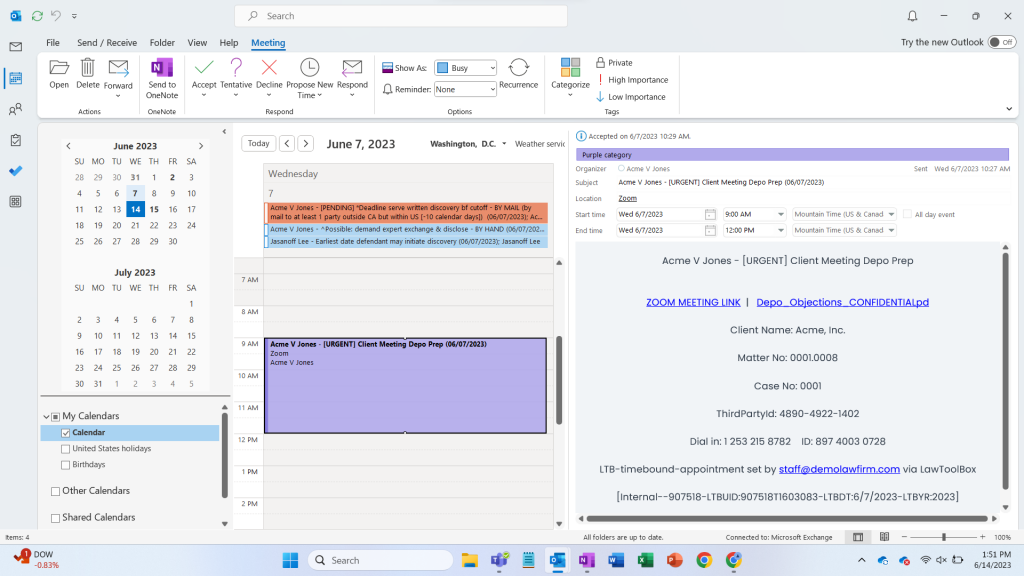Time and advice, Abraham Lincoln famously said, are a lawyer’s stock in trade. If so, then the two most important tools in a law practice may just be the calendar and the document management system. Through the calendar, the lawyer manages time, and through documents the lawyer dispenses and memorializes advice.
Given this, the recently announced integration of rules-based legal calendaring software LawToolBox with document management system NetDocuments seems as natural a pairing as hot fudge and vanilla ice cream. But this integration also comes with a cherry on top, which is LawToolBox’s native operation within Microsoft 365.
What that means is that the benefits of this integration of calendaring and document management are available directly within the office environment in which most lawyers spend their days, including within Outlook and Teams, as well as within NetDocuments.
Through the integration, users get a unified calendaring experience across NetDocuments, Outlook and Teams. The integration within each customer’s Microsoft 365 tenant connects NetDocuments workspaces, users’ Outlook calendars, and Teams, allowing them to manage calendars and deadlines wherever they are.
In practice, this means that users can:
- Manage matter calendars from NetDocuments, Outlook or Teams.
- Connect a NetDocuments workspace to a templatized Microsoft Team.
- Pre-configure Microsoft Teams with their own apps, channels, and tabs.
- Automatically calculate deadlines for litigation, transactional, and administrative matters in either NetDocuments or Microsoft 365.
- Update Outlook calendars for all team members from within either NetDocuments or Microsoft 365.
- Attach secure links for NetDocuments files to any deadline or event.
You might say that makes this two-way integration a three-way integration, but there are actually even other layers of workflow integration, since NetDocuments has its own applications, such as PatternBuilder for document automation, and its own library of third-party integrations, such as with legal billing software.
Seamless Integration
In the annals of legal tech marketing, the phrase “seamless integration” is right up there with “AI-powered” in the excessiveness of its use. However, based on what I have seen of this LawToolBox-NetDocuments integration, it is about as seamless as they get.
Recently, I was given a demonstration by Jack Grow, president and CEO of LawToolBox; Carol Lynn Grow, co-owner and chief operating officer at LawToolBox; Paul Odette, director of product management at NetDocuments; and Dasha Baulina, customer success manager at LawToolBox.
They demonstrated how the integration makes it possible for users to effectively manage their calendars and deadlines from wherever they are in their workflow.
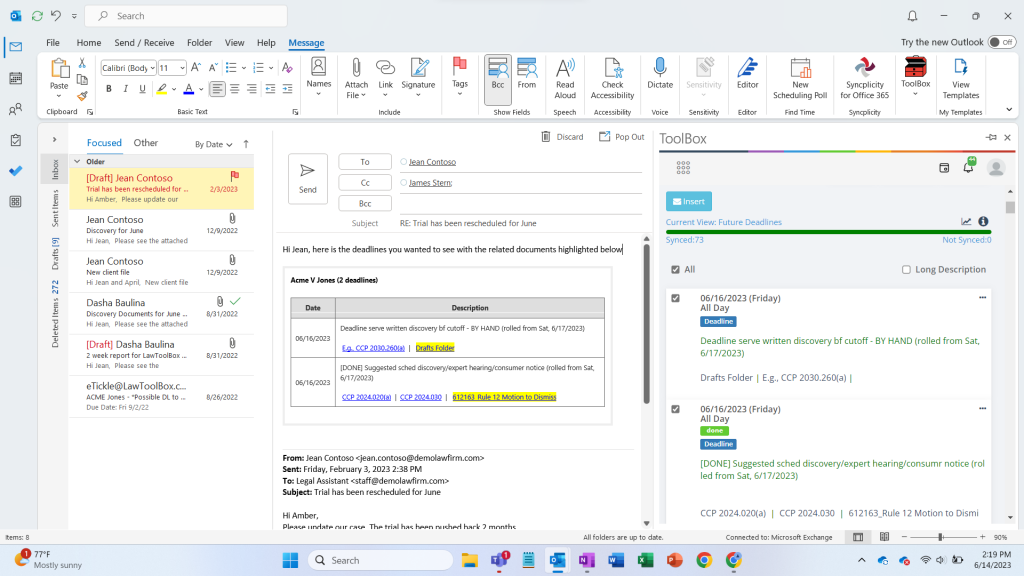
Within Outlook, deadlines calculated using LawToolBox can be linked directly to related files in NetDocuments.
“We’re so excited about this idea of taking these solutions that are best of breed, focused on specific core capabilities, and bringing them together in a unified platform and allowing an end user to be able to get their work done wherever they are,” said Carol Lynn Grow.
Jack Grow noted the similarities between his product and NetDocuments, each originally developed as among the earliest cloud-based products in legal.
“By taking both those experiences and combining them, you’re getting a best-of-breed experience that’s ubiquitous, that’s easy to use, and that’s seamless,” he said. “Once you’ve connected the systems, it’s like they were built together.”
Odette of NetDocuments said the goal of the integration is to bring together the user’s legal content and calendars into a unified experience. “Users can really start where they like, whether that’s in NetDocuments or Microsoft 365 Teams, and then they can naturally flow into the use case at hand and take that where they need to go.”
Microsoft 365 Integration
A close collaborator with Microsoft, LawToolBox is one of the most tightly integrated legal products within the Microsoft 365 environment. Its integration brings a form of legal matter management to 365, enabling legal teams to manage matters calendars, deadlines, files, notes, and more inside Outlook and Teams.
Last year, LawToolBox introduced Teams templates for different case types, allowing law firms to quickly launch Teams around cases and matters using preconfigured templates with all the Microsoft and third-party apps a team needs, now including NetDocuments.
“We’re bringing the NetDocuments experience into our Microsoft experience and then we’re bringing our calendars into the NetDocuments experience,” said Carol Lynn Grow. “We’re both bringing the best of what we do to where are clients are, so they’re getting the best of both companies in a connected way.”
Describing a potential workflow, Jack Grow said that a user might start by creating a matter in a billing solution that is integrated with NetDocuments. From there, the user can provision a workspace for the matter within NetDocuments. Then, LawToolBox automatically creates a Microsoft 365 matter, which creates a team within Teams that is automatically provisioned according to the template for that type of matter.
What that means is you then have a team in Microsoft 365 associated with a matter in NetDocuments, so the user gets all their calendar entries and upcoming deadlines not just in their personal Outlook calendar, but also in the calendar they see in their NetDocuments workspace and in the calendar they see inside the Microsoft Team.
In addition, the deadlines are organized in a deadline chart that has links to all the NetDocuments folders and files related to that deadline, so they can easily go back to those documents.
“What’s been appealing to a customer seeing this the first time is that they very quickly appreciate the value of viewing the calendar, recognizing that they need to work towards a deadline,” said Odette. “They can create the legal content, save it to NetDocuments, maybe flow into a document automation use case using Pattern Builder, and then complete the task for that deadline, and then look at the calendar again, and then see what’s next.”
“So I think having the full feature set of LawToolBox here to work with in NetDocuments, to work with the deadlines, and then having the full feature set of NetDocuments, seems quite obvious to people so far. At the same time, if, for whatever reason, it’s time to flow out to Outlook and get back into 365, it’s just a seamless transfer to that experience.”
 Robert Ambrogi Blog
Robert Ambrogi Blog